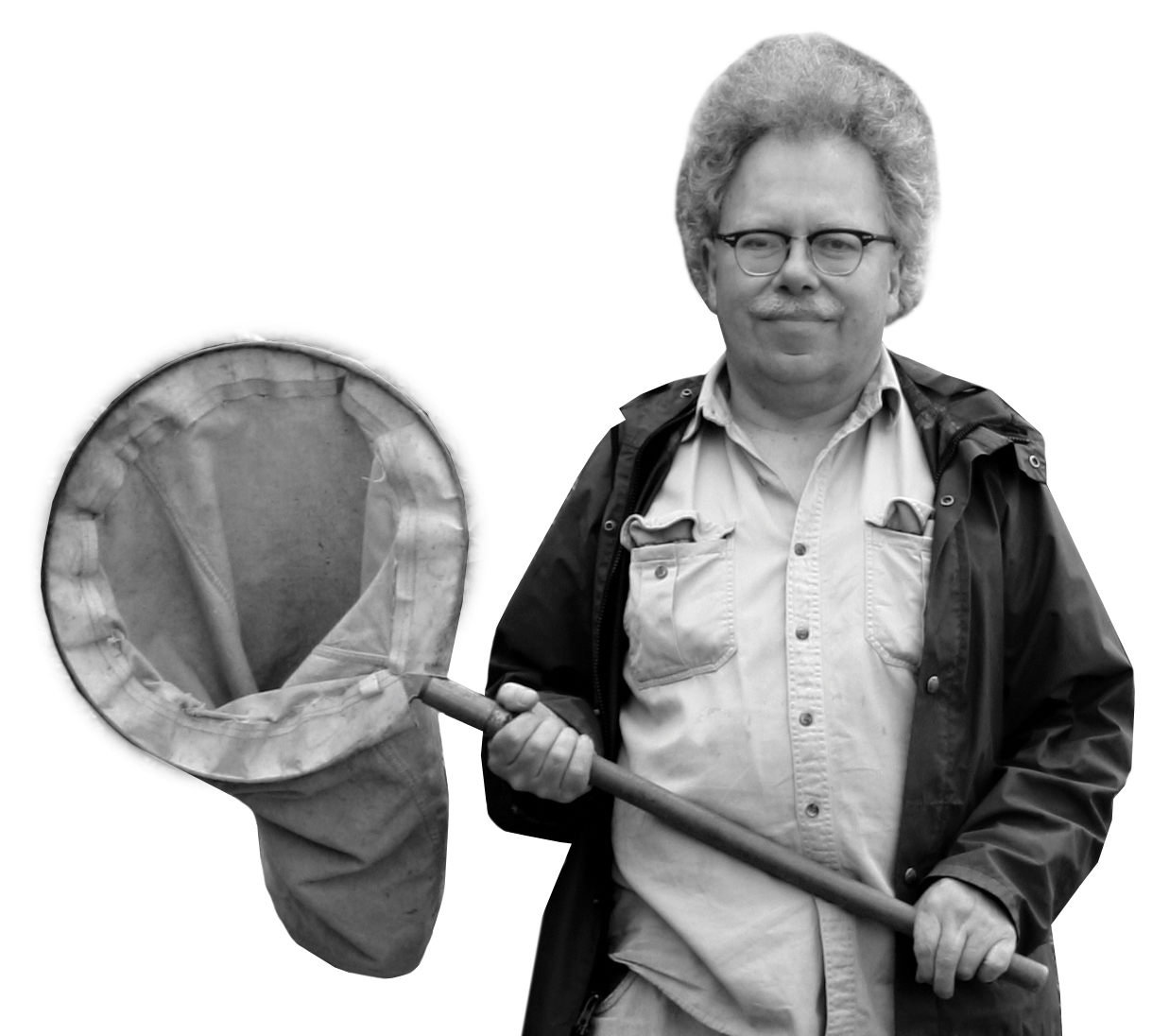Spider Whisperer
One of the region’s only spider scientists recently visited Land Trust property and we got the lowdown on spider legend versus spider fact, and how to care for your local spider cluster.
Chances are you took a look at the photo above and either got immediately creeped out but kept looking or were instantly drawn in. Spiders are quite sophisticated yet grossly unrepresented in science due to a lack of funding, and in the Northwest, there are few opportunities for students to study and work under arachnologists (spider scientists).
Rod Crawford, one of the only spider researchers in the state of Washington and curator of arachnids at Seattle’s Burke Museum, recently visited Columbia Land Trust’s Lake Rosannah property (formerly known as Mud Lake), located west of La Center in Clark County. He and field partner Laurel Ramseyer collected more than 40 spider species in total, which were deposited at the Burke Museum for research and identification.
After tapping fallen cones, sifting dead leaves, and sweeping grasses with collection nets, they found a unique species, Washington’s first specimen and extremely rare Gertschanapis shantzi, an orb-weaving spider of the Anapidae family, which is only known from a few sites in California and Oregon.
Crawford has studied spiders for 47 years, and he writes for a website dedicated to spider education that includes an ever-growing list of more than 80 myths.

Setting Spider Myths Straight
1. SPIDERS ARE NOT INSECTS
Spiders are arachnids that have two body parts (not three) and four pairs of legs. Identify a spider from other arachnids by its unsegmented abdomen and eight simple eyes.
2. IT’S PROBABLY NOT A SPIDER BITE
A true spider bite is so rare that an average person might be bitten once or never in their lifetime, and it’s more likely you were bitten by an insect or have another skin issue entirely. It’s also nearly impossible to swallow spiders in your sleep and no spider has ever been documented drinking from a sleeper’s mouth or eyes as the legend says.
3. THEY DON’T ONLY SUCK JUICES OF PREY
Many books and even the accounts of spider observers claim that spiders only suck the “juices” or blood of prey and waste the rest like vampires, but spiders actually do eat some digestible solids.
Spiders in Your Home and Garden
Spiders hatch in the spring and fall and benefit gardens and homes as predators of insects. There are many ways to invite spiders into your garden. First, eliminate invasive plants and replace them with a variety of native sheltering habitat for weather that is too dry, wet, or cold for spiders. Plants such as salal, sword fern, tall grasses, and coniferous trees with dense foliage, plus layers of leaf litter and dead wood, make excellent spider habitat. “If a spider is in your home, it’s likely a house spider that is adapted to survive indoors, and has never been outdoors,” said Crawford. “Attempting to ‘rescue’ or throw a house spider outdoors does more harm than good.”
Read pages upon pages of spider myth and fact on the Burke Museum’s website. Plus, visit Rod Crawford’s Spider Collector’s Journal.